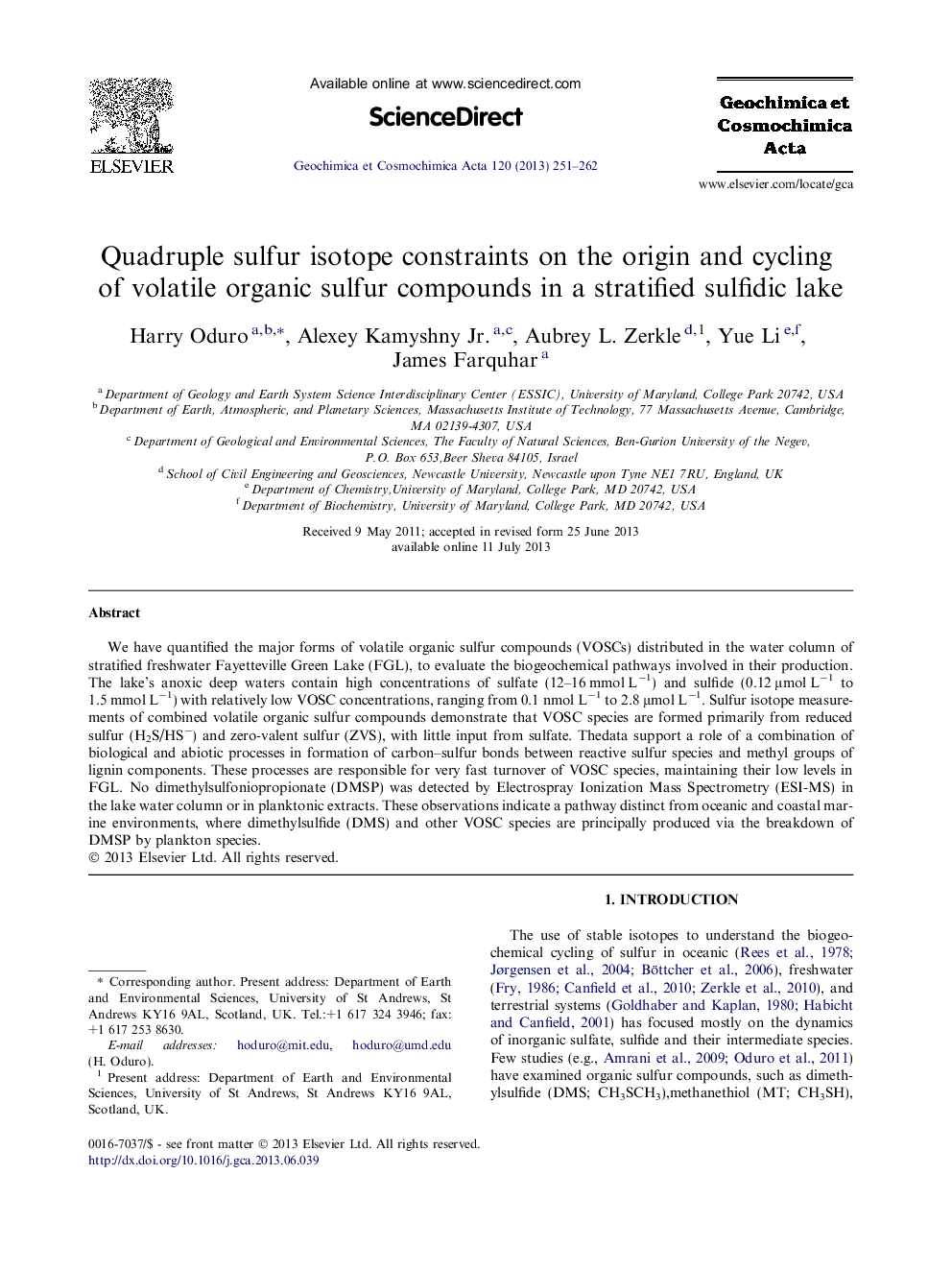| کد مقاله | کد نشریه | سال انتشار | مقاله انگلیسی | نسخه تمام متن |
|---|---|---|---|---|
| 6438988 | 1638037 | 2013 | 12 صفحه PDF | دانلود رایگان |
عنوان انگلیسی مقاله ISI
Quadruple sulfur isotope constraints on the origin and cycling of volatile organic sulfur compounds in a stratified sulfidic lake
ترجمه فارسی عنوان
محدودیت ایزوتوپ های گوگرد گازی چهارگانه در مبدا و دوچرخه سواری ترکیبات گوگرد آلی فرار در یک دریاچه ساتیفی
دانلود مقاله + سفارش ترجمه
دانلود مقاله ISI انگلیسی
رایگان برای ایرانیان
موضوعات مرتبط
مهندسی و علوم پایه
علوم زمین و سیارات
ژئوشیمی و پترولوژی
چکیده انگلیسی
We have quantified the major forms of volatile organic sulfur compounds (VOSCs) distributed in the water column of stratified freshwater Fayetteville Green Lake (FGL), to evaluate the biogeochemical pathways involved in their production. The lake's anoxic deep waters contain high concentrations of sulfate (12-16 mmol Lâ1) and sulfide (0.12 μmol Lâ1 to 1.5 mmol Lâ1) with relatively low VOSC concentrations, ranging from 0.1 nmol Lâ1 to 2.8 μmol Lâ1. Sulfur isotope measurements of combined volatile organic sulfur compounds demonstrate that VOSC species are formed primarily from reduced sulfur (H2S/HSâ) and zero-valent sulfur (ZVS), with little input from sulfate. Thedata support a role of a combination of biological and abiotic processes in formation of carbon-sulfur bonds between reactive sulfur species and methyl groups of lignin components. These processes are responsible for very fast turnover of VOSC species, maintaining their low levels in FGL. No dimethylsulfoniopropionate (DMSP) was detected by Electrospray Ionization Mass Spectrometry (ESI-MS) in the lake water column or in planktonic extracts. These observations indicate a pathway distinct from oceanic and coastal marine environments, where dimethylsulfide (DMS) and other VOSC species are principally produced via the breakdown of DMSP by plankton species.
ناشر
Database: Elsevier - ScienceDirect (ساینس دایرکت)
Journal: Geochimica et Cosmochimica Acta - Volume 120, 1 November 2013, Pages 251-262
Journal: Geochimica et Cosmochimica Acta - Volume 120, 1 November 2013, Pages 251-262
نویسندگان
Harry Oduro, Alexey Jr., Aubrey L. Zerkle, Yue Li, James Farquhar,
